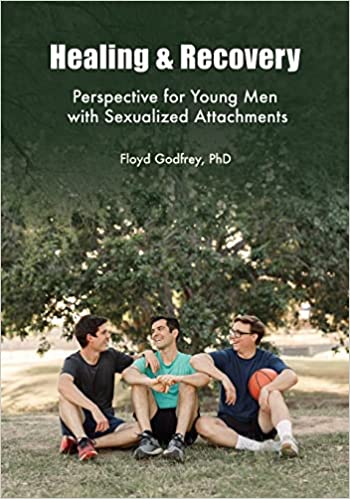I’ve worked as a professional therapist with hundreds of men, women, and youth who have sexualized attachments. Usually these clients came to my office expressing pain, conflict, and confusion. They often struggled with childhood difficulties that seemed relevant to their confusion. They shared private and sometimes traumatic stories of events they insisted had contributed to their pain.
Drawn to Help Clients with Sexualized Attachments
My attention was piqued when Dr. Lisa Diamond wrote her book in 2008 about sexual fluidity.[1] In it she discussed her observations that some women shift attraction toward either a man or a woman. This shift for some individuals pointed her toward the concept of sexual fluidity. Dr. Diamond observed that for some women love and desire are not rigidly heterosexual or homosexual.
Dr. Diamond’s research enhanced my clinical observation that some people’s sexuality was influenced by various emotional dynamics. As I explored this issue, concepts of secure-attachment, insecure-attachment, defensive-detachment, and anxious-attachment kept coming up in the research. As did the concept of sexualized attachments that includes issues such as trauma bonding, trauma repetition, and trauma re-enactment.
I spent several years collaborating with other professionals – some who felt strongly about environmental influence and some who felt strongly about genetic influence. In some instances, these professionals had intensely political or religious beliefs. I listened and learned from both positions and after more research, decided to write a workbook, “Healing and Recovery”.
My fear is that adults and youth label themselves as abnormal or broken when they are actually experiencing symptoms of sexualized attachments. In this scenario, clients are labeled based on attraction. People who experience sexualized attachments, may be completely uneducated about emotional deficits or attachment wounds. They may be living without any awareness of their own unaddressed attachment needs or wounds.
Healing & Recovery – Perspective for Young Men with Sexualized Attachments

Now Available!
Many heterosexual young men get discouraged and confused by symptoms of sexualized attachments. Not only might they experience depression, anxiety, addiction, or other mental health challenges, but also confusion about sexuality, identity, and orientation. This workbook is designed to help young men develop clarity and self-awareness around these issues and find a pathway for healing and recovery in their lives.
“If you’re looking for answer yourself or to help a young man in your life, get Dr. Godfrey’s “‘go-to-book’ for those reaching out the hand of help to young boys and men seeking to understand their struggle” (Mary Anne Fifield, DMFT, CAS-R, CSAT, LMFT).
“A very personal book that is both candid and insightful as to the inner struggles of youth who are dealing with attachment wounds and unmet emotional needs that have been eroticized. It is also a workbook that provides a practical step-by-step process for recovery–which will be helpful not only to the individuals struggling with sexualized attachments, but also to those professionals and parents who are wanting to assist such adolescents. Thank you Floyd, for this exemplary work.” (David C. Brown, Ph.D., LMFT, Owner of Deseret Counseling Center)
Healing & Recovery – Now Available on Audible!
Click here to listen to a sample and to purchase Healing & Recovery on Audible.
Resources for Healing
History Questionnaire for Sexualized Attachments
A downloadable questionnaire for use by therapists in conjunction with an assessment to help determine the impact of sexualized attachments on the client.
Underneath
Your Fantasies
A worksheet intended to help you look deeper and develop awareness.*
*Not a therapeutic assessment;
review results with your therapist.
What are Sexualized Attachments?
An informative handout by
Dr. Floyd Godfrey with basic information about sexualized attachments and how they develop.
The Barometer
Use the Barometer tool to help analyze events that might be making preoccupation more intense.
SAST
This is a screening test for sexual addiction developed by Dr. Patrick Carnes*.
*Permission to post this screening test was given by Dr. S. Carnes at IITAP